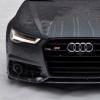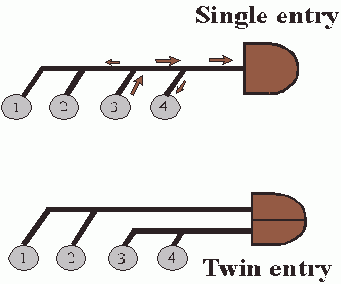Search the Community
Showing results for tags 'turbo'.
-
Anyone has any bad or good experiences with the car ?
-
Hi everyone. I just went test driving with a couple of colleagues today. Was surprised to hear that the new turbo charged Forrester is going at 101K. The drive was shiok...pick up very good for a big car and auto one too . Incidentally, the rex is going for 109K now sure got some chiongster out there that will be tempted by these new prices...
-
Hi guys, Just wanna find out if the fan that activates after i turn off the engine of the 9-3SS just after a hard drive acts as an alternative to a turbo timer? Does this fan cool the turbocharger? Where can i install a turbo timer in my car and how much will it cost? Thks!
-
Specifications General Manufacturer Opel Model Speedster 2.0 Turbo Powertrain Layout Mid Engine / RWD Base Price Not Available Dimensions Length 3786 mm / 149.1 in Width 1708 mm / 67.2 in Height 1117 mm / 44.0 in Wheelbase 2330 mm / 91.7 in Weight 1005 kg / 2216 lbs Front / Rear Track F 1450 mm / 57.1 in R 1488 mm / 58.6 in Engine Configuration 2.0 Liter Turbo Ecotec Inline 4 Valvetrain DOHC 4 Valves / Cylinder Displacement 1998 cc / 121.9 cu in Power 149.1 kW / 200.0 bhp at 5500 rpm Torque 250.0 Nm / 184.4 ft lbs at 1950 rpm Bore 86.0 mm / 3.39 in Stroke 86.0 mm / 3.39 in Compression Ratio 8.8:1 Bhp / Liter 100.10 bhp Redline Not Available Chassis & Body Body / Frame Lightweight Bonded Aluminium Steering Rack & Pinion w/ Shock-Absorber Brake Type Vented Discs & ABS Brake Size F 288 mm / 11.3 in R 288 mm / 11.3 in Wheels F 43.2 x 14.0 cm / 17.0 x 5.5 in R 43.2 x 19.1 cm / 17.0 x 7.5 in Tyres F 175/55R-17 R 225/45R-17 Transmission Gear Type 5 Speed Manual Final Drive 3.95:1 1st Gear Ratio 3.58:1 2nd Gear Ratio 2.02:1 3rd Gear Ratio 1.35:1 4th Gear Ratio 0.97:1 5th Gear Ratio 0.79:1 Performance Top Speed 243.0 kph / 151.0 mph 0 - 62 mph 4.9 seconds 0 - 100 mph Not Available 0 -
-
Today C&C advertise the new S600 V-12 bi-turbo. Some pretty impressive specs: 0-100kmh = 4.8 sec 5.5 litre twin turbo 368kw (500 bhp) Max torque = 800Nm @ 18000 rpm Don't know how much it cost but would be wonderful to take this baby for a spin! Cheers!
-
http://www.supercars.net/PicFetch?pic=2003_vauxhaul_vx220_turbo-1.jpg http://www.supercars.net/PicFetch?pic=2003_vauxhaul_vx220_turbo-2.jpg http://www.supercars.net/PicFetch?pic=2003_vauxhaul_vx220_turbo-3.jpg What is already one of the most capable chassis on the road has had further development to harness the extra engine power over the 2.2 litre 16v. A quick glance at some vital statistics confirms why the new VX220 Turbo promises to be something special: engine power output of 200 hp; 0 to 60 mph in under 5 seconds; 0 to 100 mph in under 13 seconds; a power to weight ratio of 4.9 kg/hp; a top speed of 151 mph. Engine The heart, quite literally, of the VX220 Turbo is the familiar transverse two-litre, sixteen valve, turbocharged engine being used to good effect in the new Astra GSi. In the VX220 Turbo however, it is installed just in front of the rear axle. It is constructed of a cast iron block and aluminium head with twin overhead (DOHC) camshafts. Maximum power from the turbo unit is 200 hp @ 5500 rpm, while engine torque is an impressive 250Nm from 1950 rpm all the way to 5500 rpm. Other differences between it and the normally aspirated 2.2 include the compression ratio (8.8:1 for the Turbo and 10:1 for the 2.2), and a reduced oil capacity, but increases in cooling capacity and battery power for the Turbo. Chassis Only minor changes have been made to the capable chassis of the VX220, to accommodate the extra power of the turbo engine. The basic principles stay the same: a super rigid lightweight aluminium chassis, double wishbone suspension, high performance brakes with ABS and unique Bridgestone tyres. Changes have been made to the spring and damper rates, which have been increased at the front and rear by 7% and 11% respectively to improve body control and high speed stability. The new tuning provides improved passenger isolation and comfort over road impacts. Standard brakes remain at 288 mm diameter discs all round but with the Turbo there is the added option of lightweight ventilated and cross-drilled discs.
-
Check out this link.... http://www.autoexpress.co.uk/?domain=evo&p...age.php?start=1
-
Hi Guys, If your good fren (not so knowlegeable one) wanna get the Asstrek TurboR, how would you advise him/her??? ....... any other comparable alternatives in the market to consider???? Cheers n very many thanks
-
hi All, dealer selling above 1.8 turbo for 70k, 1 owner, mileage claimed as 19k km..... is this a good buy??? i tot the yearly depreication gotta be low 7k pa to be worth the while... dealer said it's about 8k++ pa....... thanks in advance for any info/advice cheers
-
Noticed that all stock turbo cars dun come wif a turbo timer (incl rex). Similarly, Volvo says my T4 doesn't need one too. Getting a bit paranoid switching off the engine immediately after a drive. However, thot turbo timers are one of those essential stuff to keep the engine running to help cool and prolong the turbo's lifespan. Question: If turbo timers are supposed to work, how come they dun come as a standard fitment on turbo cars or why do manufacturers say it's not necessary??? Me very confused......
-
anyone has experience in the addition of low pressure turbo charger to cars that do not have turbo charging? does adding a turbo, even running in low boost, damage the engine and its associated systems?
-
Has Any of you has intall a Turbo Timer in his Octavia Turbo??? Any coments? THX; Isaac
-
Heard that local agent will be bring'n this hot wheels in, anybody know about this car?...... looks good on paper
-
Can anyone here kindly provide some insight on the prices of the 850R or 850 turbo? Probably a 95 model onwards. Thks!
-
Short article in today's STLife on a Zouk (interesting place to launch Audi's, if you ask me... ) spoke on the launch of the following 3 Audi models - A3 1.8T (Tiptronic and Quattro) and A4 1.8T Quattro. Considering the local hi-powered market, was wondering whether even the least pricey of the trio (A3 1.8T tiptronic) with a price tag of $110 without COE would catch many suitors, 180hp notwithstanding. More interestingly, seeing that BM was supposed to have been working on bringing in the 210hp Leon Cupra R (anybody got updates on that ?) supposed to be priced around $20-30-odd k more than that. On the other end of the spectrum, PA's asking for $145k (w/o COE) for the A4 1.8T Quattro. Price-wise, that takes head on with lots of more established steroid-upped exec-sedans, not to mention its A6 brethren.....(do I hear an S60 T5 calling my name....? ). Anybody care to comment how they think these hot(-ter) Audi's will fare locally ?
-
Actually alot Turbo cars will be kenna of this. No long, only the desiel cars will be come up turbo and in fact they can be very fast.
-
Originally developed for commercial diesel applications, turbochargers with a twin-scroll turbine housing have now been successfully adapted for use with passenger car engines (both gas and diesel). By utilizing dual openings, or volutes, into the turbocharger's turbine housing, exhaust energy is optimized which results in better engine performance at low speeds, decreased backpressure at high speeds, and significant gains in fuel economy. Traditionally, passenger car turbochargers have had only one volute through which exhaust gases leaving the engine cylinders can enter the turbine housing (where they are used to create torque). Unfortunately, this single entry design can sometimes lead to combustion inefficiencies, since some cylinders are expelling burnt gases while others are inhaling fresh air for combustion. What happens is that the hot, dense exhaust gases from the first set of cylinders are drawn into the second set of cylinders, causing the combustion occurring in those second cyf the fuel it's consuming. Several wastegate solutions were considered to counter this problem, with a twin-scroll design ultimately providing the best solution. A twin-scroll, or twin-entry, housing allows each set of cylinders to release its exhaust gases into a dedicated volute. That way, it doesn't interfere with the other set of cylinders, which is taking in fresh air at that same time. Of course, refinements were necessary to account for the divider between the two volutes, but thanks to the dedication of Garrett engineers, those challenges have been met. As this technology is further developed, even smaller passenger car engines will be able to experience the benefits of the twin-scroll turbine housing design including those fueled by natural gas. And, as with all the products Garrett manufactures, twin-entry turbocharger technology will continue to be developed with an eye toward even greater efficiency and maximized performance.
-
Here's a writeup for 700series turbo upgrade, pretty informative: "The Mitsu/Eagle cars used Mitsu turbos, but the housing may be different where it fits the manifold and in the exhaust area. The guts are the same. A turbo rebuilder could put the guts you want (meaning cartridge with upgraded turbine and/or compressor in a Volvo housing if the housings are different, but you must make sure that the Volvo housing is the A/R ratio (usually given in cm squared for Mitsu turbos) that you want. If the housings are different where they fit the manifold, you could have your manifold machined flat and then use a gasket between it and the non Volvo turbo. Since I don't know the turbo that you refer to, I cannot estimate the power gain. If you have a TD05H-12G now and you upgrade to the TD05H-16G, which is popular for Mitsu/Eagle cars, you would lose bottom end response and gain top end response. You need to make sure that the A/R ratio is what you want. The TD05H-16G used on a manual trans Mitsu/Eagle as a performance aftermarket iten would probably not be great on an automatic 740T. Generally a smaller A/R ratio is used on automatic cars. I don't know the Mitsu turbo A/R ratios very well, but I think you should look into this issue. The bottom end response would be in spool up time. Whereas before you might have had full boost at 2500 rpm when measured in 4th gear from a 2000 rpm rolling start with full throttle (it can be harder to measure with an automatic even with the kickdown cable removed because the torque converter will slip), you might get it at 3000 rpm with the bigger turbo. These are just guesses. From that point forward, the bigger turbo would produce more power. The gain would be greatest at maximum boost and load, like 5500 rpm in 4th. It could be on the order of 25 to 30 hp at that point, mostly due to the colder and denser air produced by the higher flowing turbo that is more efficient at that airflow level. So you have to balance out the extra top end pull, which you use relatively rarely, against the loss of boost at lower rpm, where your engine spends a lot of time. With a manual trans, you can manipulate the rpm more easily so that you spend more time with the rpm slightly higher, so that boost is only a second away. With an automatic, the car will shift itself and spend a lot of time at low rpm, where boost (and power) will be a few seconds away. The car with a big turbo could be faster on the dragstrip, where you power brake to bring boost up (provided that the torque converter has a sufficient stall speed) or you slip the clutch to bring the rpm up to where the turbo will soon make boost once load is applied. But it could be slower in daily driving on the street, where boost is seconds away. The TD05-12G can probably make 250 hp. A 14G might make close to 300 hp. A 16G might make close to 350 hp. I suggest that you don't buy too much more turbo than you need. At stock boost of 7 psi, expect minimal improvement. The stock turbo is efficient at that boost level. What you might gain would be offset in daily driving by the loss of response. At 7 psi, you have no fuel problems. The stock injectors are probably good for somewhere between 220 and 240 hp. To get up to this level, you would need to run 14 psi of boost on a stock turbo. Perhaps slightly less on a bigger turbo. You have to measure these things if you want to be assured of reliability. You need to make sure your injectors are cleaned and flowed. You need to measure the mixture with at least a voltmeter (tapping a wire into your 02 sensor signal lead under the hood BEFORE it becomes the thick green coaxial cable and bringing a ground wire from the engine block into the car for your voltmenter leads to attach to); you measure it stock boost and at what boost level it begins to drop off under the same measuring circumstances (i.e., 60 to 100 mph on 4th on the same stretch of road and with the same accessories on like lights or fan). Then you run 2 psi less. Probably you'll get a reading of about 0.90 volts"
















